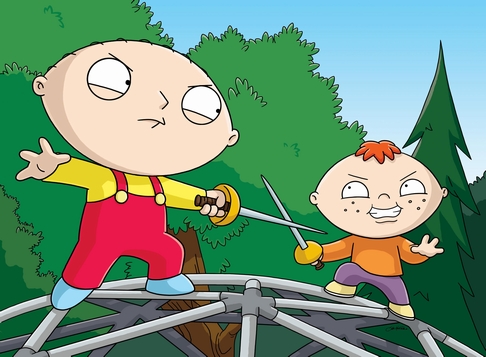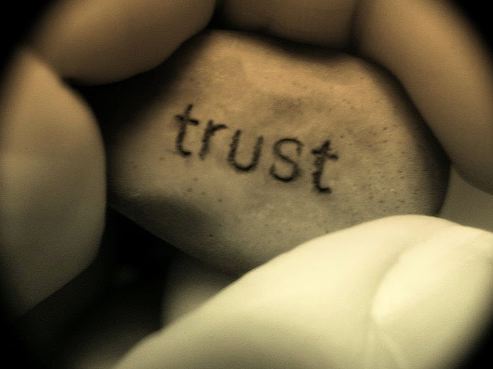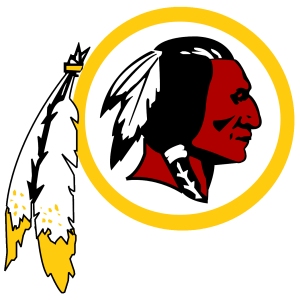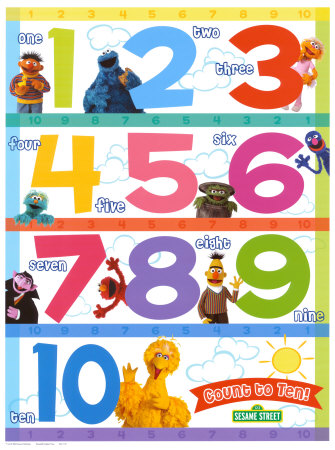

[NOTE … this post is about phones and one of my clients is Research In Motion, the maker of the BlackBerry. This post represents my thoughts, not anyone else’s. If anyone agrees with this it was simply dumb luck. I never consult, advise, or otherwise communicate with any of my clients about this or any other JuiceBar post past, present or future. And sadly, no one pays me to do this. Just me doing my thing. Now that I’ve made the FTC happy …]
Quick. How many recent rivalries can you think of?
 Let’s check. In entertainment there was Leno and O’Brien dust up. In politics we recently had Cheny vs. Biden. And in business there are those great Apple vs. Microsoft ads. I’m a Mac! I’m a PC!
Let’s check. In entertainment there was Leno and O’Brien dust up. In politics we recently had Cheny vs. Biden. And in business there are those great Apple vs. Microsoft ads. I’m a Mac! I’m a PC!
With a vengeance.
This is no Coke vs. Pepsi or Starbuck vs. Dunkin Donuts.
This is personal.
First there was the piece in the NYTimes about how much Google CEO Schmidt and Apple CEO Jobs hate each other. That included reports that Jobs believes Google is the devil incarnate.
Now newly hired Google tech wizard Tim Bray claims that he indeed wants to ‘kill’ the iPhone. In his blog, Bray writes:
The iPhone vision of the mobile Internet’s future omits controversy, sex, and freedom, but includes strict limits on who can know what and who can say what. It’s a sterile Disney-fied walled garden surrounded by sharp-toothed lawyers. The people who create the apps serve at the landlord’s pleasure and fear his anger.
I hate it.
My my. Tell me how you really feel.
That’s a lot of hating.
It makes the Israeli-Palestinian discourse sound civil. At least the Irish can hate each other based on centuries of history and theology. While you may think both are assholes, at least Olberman and O’Reilly hate each other based in part on some basis in public policy and the role of government. Even Kill Bill Uma Thurman’s hate — while excessive — had a legitimate source (torture).
But all this this vitriol?
It is about a freaking phone. That’s right guys (and gals) … a phone. Does phone technology merit us to rise (or sink) to the emotion of hate? Killing? It can’t be about the money because as best I can tell all these guys (and they are guys!) are filthy rich.
So what gives? I suspect it is egos and marketing.
I’d note that the dictionary defines ‘bray‘ as to ‘make a loud, harsh, disagreeable sound.’
Hard to say “I hate you” and not have sound like … a bray.
There’s a buzz around a recent report by the public relations firm Edleman. For ten long years they have invested in something they have called the “trust barometer.” Think of it like a trust weather vane. Where is trust going? How strong is that wind? Who becoming more trustworthy? Who is becoming less?
 Now I’ll admit that I’m skeptical about all such research. One reason is that I do that for a living. I know how tricky it is to measure ANYTHING related to public opinion, much less values and beliefs. Measuring trust is right up there with predicting the path of nanoparticles. In fact — to carry the quantum physics analogy further — you can spend a lot of time just defining what you mean by the word trust.
Now I’ll admit that I’m skeptical about all such research. One reason is that I do that for a living. I know how tricky it is to measure ANYTHING related to public opinion, much less values and beliefs. Measuring trust is right up there with predicting the path of nanoparticles. In fact — to carry the quantum physics analogy further — you can spend a lot of time just defining what you mean by the word trust.
But I digress.
The most recent report by the Edelman Trust Barometer is a juicy “man bites dog” story.
Amidst the growth of social networking and consumer generated content, people are trusting their friends LESS, not MORE.
Yes, you read that right. All that money and time we spend on peer-to-peer communication has resulted in people thinking less and less of each other.
Seems that the more and better I get to know you, the more I realize that you’re not smarter than me. You’re just another Joe. Warts and all.
Perhaps even worse. With all your tweets, and posts and streams I come to the startling realization that you are even MORE screwed up than I AM. And I’m a really screwed up person! I should know.
Because I know myself only too well, I don’t trust myself with a lot of things. Now I’ve read your blog, your Facebook page, your Twitter stream and I’m not impressed. I thought you had it all together. But you sound a lot like me. Why the hell should I trust you?
I write all this knowing people who read this blog are saying the same thing about me. They read this and say — “who the hell is this guy?” Why the hell am I listening to him? I’m perfectly fine with that.
And that’s the lesson of social media. We knew it before blogs and MySpace pages. Familiarity can indeed breed contempt.
And that was the mistake all along. The big myth in social media was that peer-to-peer communication would elevate everyone. That there would be wisdom created in crowds. That trust would emerge as we all got to know each other.
But something different happened along with way. We didn’t change. We remained ourselves, just with a lot more avenues to express that. And we exposed the true nature of trust.
I don’t trust the shallow frat boy. I don’t trust the occasional remark. I don’t trust just any old joe just because he or she is my age and looks like me. I don’t trust folks shilling for that latest cause.
I trust people who don’t look at me as a customer, a potential sale, or a Linked In connection.
I trust people who look at me as a person, a human being, and a friend.
This being Sunday, I thought a bit of theology combined with brand communication might be in order.
The lesson for this morning: actions ALWAYS speak louder than words.
This is true in life. This is true for brands.
A bit of background.
 Last Sunday I started on a series of email exchanges with friends on things theological. What prompted the online discussion was a close friends’ bridling at the Pontiff’s message to the Kennedy family following Senator Ted Kennedy’s death. The discussion took many different twists and turns and involved several people — some you’d recognize — but ended (or last left off at …) in a discussion of faith and works. The closing observations even included the catchy and often derided “WWJD” or “what would Jesus do” acronym — and this favorably by a theologian of much repute seemingly not given to religious market hoopla.
Last Sunday I started on a series of email exchanges with friends on things theological. What prompted the online discussion was a close friends’ bridling at the Pontiff’s message to the Kennedy family following Senator Ted Kennedy’s death. The discussion took many different twists and turns and involved several people — some you’d recognize — but ended (or last left off at …) in a discussion of faith and works. The closing observations even included the catchy and often derided “WWJD” or “what would Jesus do” acronym — and this favorably by a theologian of much repute seemingly not given to religious market hoopla.
For the un-initiated, the Christian theological debate over faith vs. works is a lively one.
The proponents of the latter inevitably look to and cite the book of James, a small book tucked away amidst the Pauline epistles. The author is thought to be the half-brother of Jesus and some believe was written to counter any misperception from Paul’s preaching that good works aren’t important. (If you’re REALLY interested you can look up “legalism” and “antinomianism“.)
Basically, James says that faith without works is a bunch of hooey. To prove his point (and my favorite part of the book) James writes in a prose laced with criticism something to the effect of the following:
“If someone is poor, hungry and needs clothes for the family and all you do is give them a smiley face, buck them up with some cheap words of encouragement, slap them on the back and say … ‘don’t worry … be happy.” Well if you actually think that by doing that you’re really helping that person you’re an idiot. Well ok. You’re either an idiot or a hypocrite. Because your actions always speak louder than your words — words being always cheap and oftentimes wrong (James also has a lot to say about that!).
Want to do something that will really help the poor and the hungry? How about getting up off your fat, lazy ass and giving people something to eat? How about dipping into your pocketbook and buying them some clothers? Stop all the idle, hang-wringing, self-indulgent chit chat. DO SOMETHING!!!
Or something to that effect. Perhaps not that strident but I think I’m directionally correct.
Which leads me to the Washington Redskins.
 According to reports this week, the Washington Redskins are suing those season ticket holders who are unemployed, desolate, and out-of-luck or who otherwise, because of recent circumstances, can’t fulfill their contractual multi-year, thousands of dollars season ticket obligations.
According to reports this week, the Washington Redskins are suing those season ticket holders who are unemployed, desolate, and out-of-luck or who otherwise, because of recent circumstances, can’t fulfill their contractual multi-year, thousands of dollars season ticket obligations.
Based on the reports in the Washington Post, among those being sued by the Redskins are unemployed grandmothers, recently laid-off and divorced moms and dads, as well as those who’ve lost their life savings to illness.
So you sue them.
Somebody should tell the Hogettes that they better keep their day jobs.
Last I knew there was a waiting list for Redskins season tickets.
Times must be really tough.
But not really.
According to Forbes, the Washington Redskins club is the second-most valuable, clocking in at an estimated $1.5 billion in value. Snyder bought the club for $750 million. Pretty good return, no?
Someone at the Redskins ought to wake up. You can play “Hail to the Redskins” as much as you want. You can market all the maroon and gold memorabilia that you want. You can rent out players to civic and community events.
But at the end of the day it is what you do that matters. Who wants to be a brand that sues its fans when they’re down and out?
Actions speak louder than words.
The marketing fad of the century.
No, it is not mobile phones. Not reality television. Not Paris Hilton or black presidents with funny names.
It isn’t celebrity endorsements or home spun viral videos.
It isn’t social media, it isn’t Twitter or Facebook or any of that other stuff.
It is free money.
Yup, FREE MONEY. Throw out all those new fangled, technology-laden ideas. Simply give people FREE MONEY and your product or service will be a sure fired hit.
 The confirmation of this breakthrough discovery came late last week amidst the craze over the “cash for clunkers” program.
The confirmation of this breakthrough discovery came late last week amidst the craze over the “cash for clunkers” program.
For those not familiar, the cash for clunkers program is a free money program for anyone who finds him or herself stuck with an old gas-guzzling car. You may have that gas guzzler because you were too stupid to see the coming oil crisis coming and had this fantasy that you’d be able to afford tooling around in a half-ton pickup or an SUV the size of a small school bus.
Or you may have that gas guzzler parked in the driveway simply because it has been 15 years since you bought a new car and you’ve been too cheap to buy a new one.
You see, it really didn’t ‘t matter WHY you have a gas guzzler. The only qualification for free money is that you HAVE a gas guzzler. The only criteria is possession, not motivation.
Bingo … you get $4,500. Everybody loves it. It was so popular that the government stumbled over itself to dole out even more FREE MONEY once the original free money ran out.
[In fact, I’m thinking of creating a gas guzzler secondary market — I’ll buy up gas guzzlers cheap and resell them for people looking for FREE MONEY. I’ll sell you a $2,000 gas guzzler and you can turn around and trade it in for a new car and get double that in FREE MONEY. This is a secret plan so please don’t tell anyone.]
The cash for clunkers is one of a long list of FREE MONEY successes of 2009.
Some five years ago finance companies like CountryWide Mortgage promised people FREE MONEY so they could buy homes they otherwise couldn’t afford. It was a runaway success in the U.S and abroad. Those folks at CountryWide couldn’t give away free money fast enough and home sales soared. Then there was Bernie Madoff. He promised FREE MONEY to anyone with a savings account. He gave people FREE MONEY regardless of risk and market conditions. Bernie was very popular.
But the granddaddy of the FREE MONEY marketing approach has been the U.S. government. They have bee doling out FREE MONEY for decades for things like agriculture, prescription drugs, military weapons, and all sorts of cheap consumer goods from abroad. The farmers, drug companies, defense contractors and the Chinese can’t get enough of it.
Now it is true that CountryWide Mortage eventually went bankrupt. And Bernie Madoff eventually went to jail. But the government — God bless the government — the government is like that dog gone Energizer bunny and just keeps going and going and going.
So when you set up your FREE MONEY marketing program, be sure that you’ve figured out how to get the government to watch your back. There are several strategies that work like tying your FREE MONEY program to something that makes politicians look good (like the cash for clunkers thing). Oh, and if you’re one of those companies that is “too big to fail” … then the FREE MONEY program is a slam dunk.
So at that next marketing brainstorm meeting, after everyone has trotted out their old-style, fuddy duddy, predictable sales and promotion ideas — iPhone app … Ning site … whacky video contest … blah … blah … blah … blah.
When they turn to you, speak confidently the two secret words of marketing success that we KNOW works in the new millennium.
Free money!
Most folks who know me know that I’m a BIG fan of the number three.
In fact, I should write a post about the number three. I think I’ll do that. Stay tuned.
Three is the perfect number. It is nature. It is morning, noon, and night. It is breakfast, lunch, and dinner. It is the perfect triangle. The triune God. It is the Hegelian dialectic – thesis, antithesis, and synthesis. It is even Obamaesque. Check out his non-state of the union address to Congress in January. What did he talk about? Three things: education, energy, and health care. Fact is that THREE is the number for just about every speech, sermon, or presentation structure. But I’m going to write a post about three so I’ll stop now.
 And talk about ten.
And talk about ten.
Now that’s an interesting number. Ten most wanted. Ten commandments. Top ten. A “perfect” ten. Ten is a bit odd in that it is associated both with the divine (God’s commandments) and the deplorable (FBI’s ten most wanted). It is associated with children (Sesame Street) and sports (Big Ten).
So it is in that spirit that I call attention to two “10” pieces I saw recently.
First is the “10” is Lon Safko’s “The Ten Commandments of Blogging“. Interesting. I thought everyone was on Twitter now and had abandoned their WordPress platform. Pretty good stuff. I don’t do all of them. Then again, I can’t say that I keep all of the REAL ten commandments. But I like Lon’s approach. Note that he saved the best to last. Be creative. Have fun.
Second is Graham Charleton’s top ten social media pr screw ups on eConsultancy. These are certainly the most famous. I do take issue with a couple of them. Personally, I thought Domino’s strategy in responding to the employee video was pretty good. They certainly couldn’t be blamed for having a couple of goof-ball employees out of the tens of thousands that they hire. And the fact that they responded in the same media as the source (YouTube) was pretty smart. Lots of folks would have gone straight to Good Morning America or something stupid like that.
But I guess he needed ten. That’s that other nice thing about three. There’s only three of them.
For awhile there I thought the word for 2009 was going to be “frugality.”
Frugal. Being thrifty. Back to those values that our new president spoke about last Tuesday. Values that are not new, but old. Most people who had Depression-era parents (like me) knows “frugal.”
But after lo oking at the Hyundai commercials, I’m thinking of another word.
oking at the Hyundai commercials, I’m thinking of another word.
“Resigned.”
I mean, really.
Selling someone a car and then saying that if they get fired from their job you’ll take it back?
That doesn’t makes me want to go out and buy a Hyundai! Sounds more like a death wish. Oh, and by the way, isn’t it when you’re out of a job that you need a car the most! To get to the next interview? Now that’s a campaign. Lose your job? We’ll loan you a Hyundai for six weeks to help you find another. But no. We’ll take your money first.
I’m thinking of going to clients with “Hyundai campaigns …”
It is the day before Christmas and there’s still shopping to do. What to buy?
A watch? Huh? I say that because I open up the Washington Post on the Monday before Christmas and every other page is a full page ad — a FULL PAGE — of nothing but watches. OK. A full page ad isn’t as much as it used to be. But still. That is some heavy spend. All for something that fewer and fewer people seem to use.
 What is it with Christmas and watches?
What is it with Christmas and watches?
They still make nice gifts, right? Ask John Mayer. He reportedly gives Rolexes to (some) of the women he gets “romantically involved” with (I think that means he is having sex with them).
But not everyone is John Mayer. And watches seem to be going the way of the buggy whip, particularly among young people (the object of my shopping for today).
Here’s a snippit from a story written a year ago by Martha Irvine of the Associated Press
In a survey last fall, investment bank Piper Jaffray & Co. found that nearly two-thirds of teens never wear a watch — and only about one in 10 wears one every day.
Experian Simmons Research also discovered that, while Americans spent more than $5.9 billion on watches in 2006, that figure was down 17 percent when compared with five years earlier.
Why buy a watch when a cell phone will do? Apparently it is a sentiment widely shared. I read in the New York Times that 2009 isn’t looking good for our Swiss friends. Is time is running out? Will the watch make a comeback? Will, as some claim, the watch have to turn it into some Dick Tracey type multi-function device in order to survive?
Too late! The smart phone got there first. I think I’ll go buy one of them. Then again, it we are in a recession and the kids already have a phone. I think I’ll buy (another) book.
Merry Christmas!
In the aftermath of the trauma of 9-11, President Bush gave us this advice:
“Go shop.”
 In so doing our President told us to go out and feed our nation’s greatest addiction and increasingly what many consider to be one of our last remaining economic assets: consumption.
In so doing our President told us to go out and feed our nation’s greatest addiction and increasingly what many consider to be one of our last remaining economic assets: consumption.
The ability to consume. That is our heritage. Damn the economy. To heck with the environment, education, and the sinking stock market.
Our ability to — no, our NEED to consume seems to know no bounds.
Note that this is not the consumption that our forefathers celebrated the first Thanksgiving. Back then they called consumption a disease. Among other things, consumption was more likely known as a “progressive wasting of the body” … not picking up something at the country store.
Based on what I read in this morning’s papers, we should go back to the old meaning of “consumption” — that of a deadly disease.
It is bad enough that two people pulled out their guns and died in a shoot-out at Toys R Us after their respective female companions got engaged in a bloody brawl.
But that a crowd of shoppers would actually trample to death the poor WalMart employee who has the unfortunate job of opening the door in the morning?
This, my friends, is sick. Shopping meets greed meets madness meets total lack of disregard for any one meets violence.
Welcome to the new Kris Kringle.
Here’s my advice. Don’t shop. Take a day off. Go check out the folks at “Buy Nothing Day.” Or at least shop online. Apparently a lot of people of are.
I am thankful for a lot of things.
Not shopping on the Friday after Thanksgiving is one of many.
Happy Holidaze.
I try and keep the business of my business outside the Juice Bar. But sitting at the Starbucks on the corner of 1st and Market in downtown San Diego, I feel compelled to do a quick post on two big events that collided in San Diego.

First, the BIO Convention taking place in San Diego this week. It is big. Very, very big. All of the convention center and dozens of hotels. BIO people everywhere. Oh, and not only is the convention physically big, it is conceptually big. Their theme: Heal, Feed, Fuel the Planet. Now that is big. No setting the bar low here. (Note: I and some of my colleagues are doing some work with BIO. But they were the ones with the “heal, feed, and fuel” thing. Which is good. And big. And accurate. Great combination.)
![]() Second, up the beach there was the U.S. Open at Torrey Pines. It was the biggest Open ever … and perhaps the most exciting. 50-60 thousand spectators. And estimated group fifteen thousand just following Tiger Woods. Now that is a posse! All around San Diego, every airport concourse, every hotel lobby and bar, every street … people toting USGA bags and U.S. Open memorabilia. And it came down to a draw after an 18-hole playoff and Tiger Woods, the world’s greatest golfer, emerging victorious.
Second, up the beach there was the U.S. Open at Torrey Pines. It was the biggest Open ever … and perhaps the most exciting. 50-60 thousand spectators. And estimated group fifteen thousand just following Tiger Woods. Now that is a posse! All around San Diego, every airport concourse, every hotel lobby and bar, every street … people toting USGA bags and U.S. Open memorabilia. And it came down to a draw after an 18-hole playoff and Tiger Woods, the world’s greatest golfer, emerging victorious.
The Open was to end Sunday. The BIO Conference Monday. But the U.S. Open’s 18-hole playoff caused these two giants to collide.
So there everyone was.
BIO Conference badges melding with U.S. Open paraphernalia. Corporate execs huddled in front of any flat screen that they can find in between meetings. Cheers and groans from each shot at Torrey Pines filtering down convention halls, committee meetings, hotel lobbies. For a moment, healing, feeding, and fueling the world had to take a short pause. Anybody who saw the Open contest could understand.